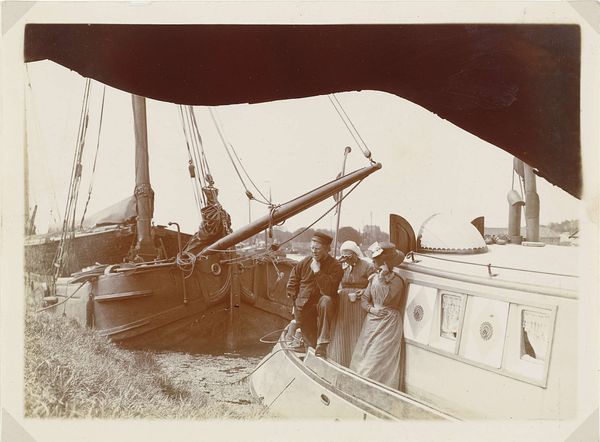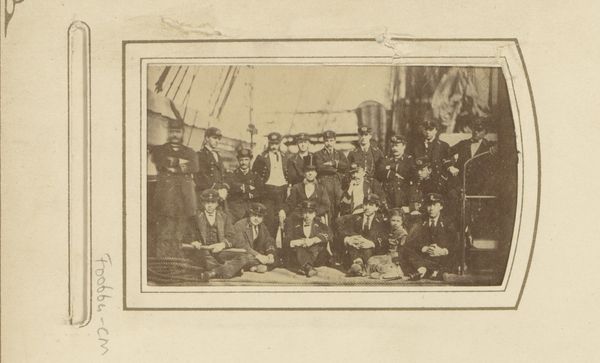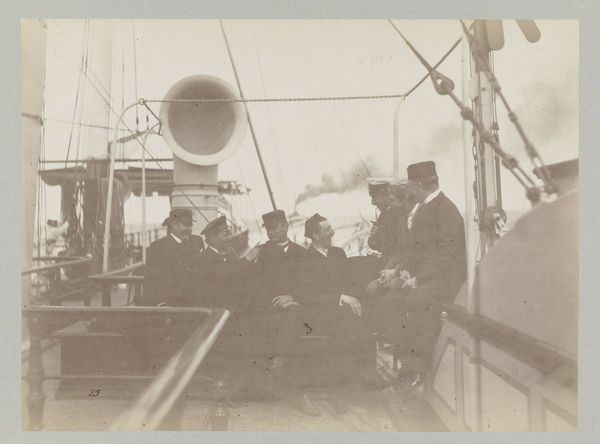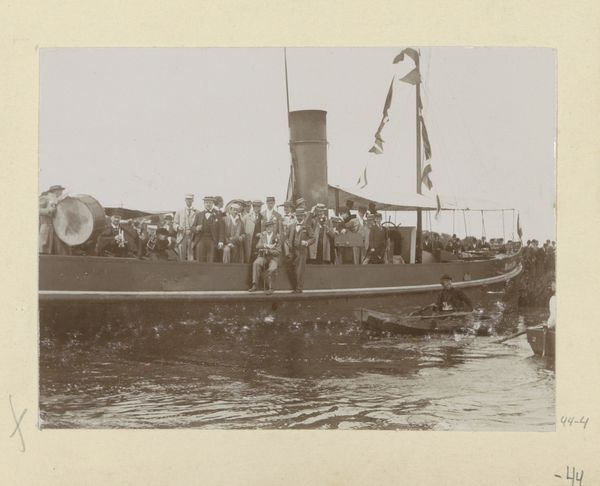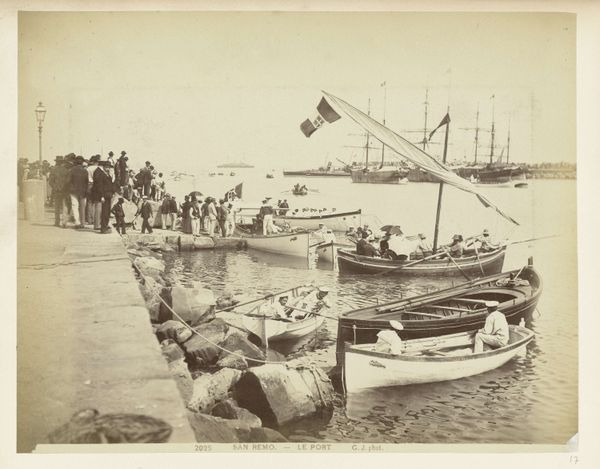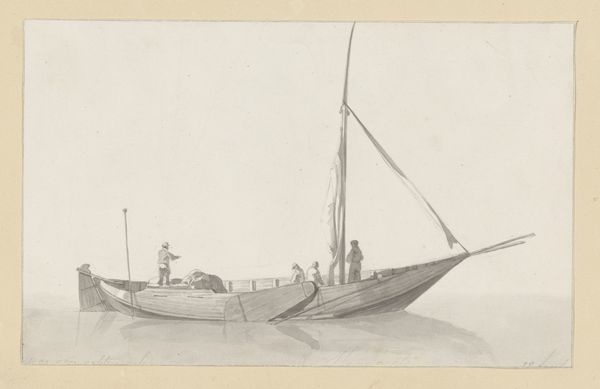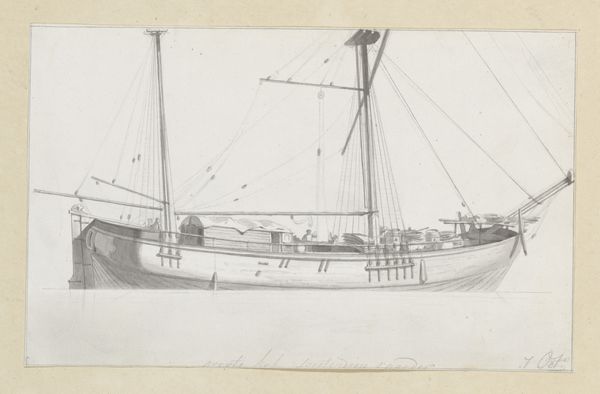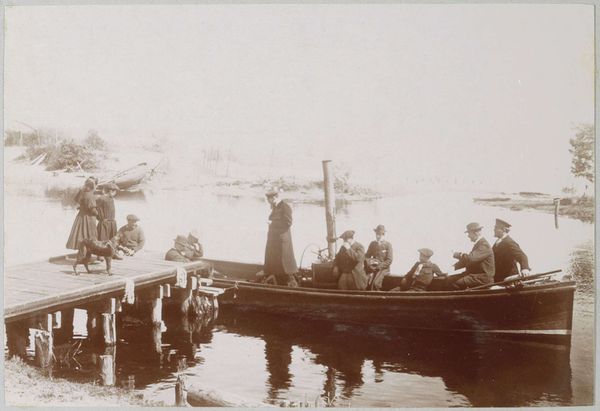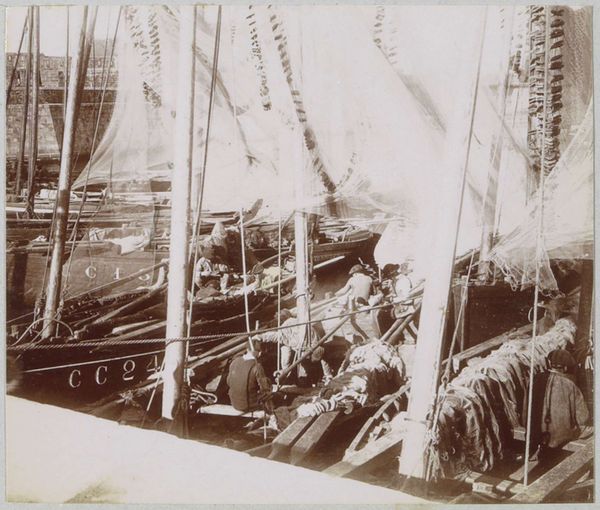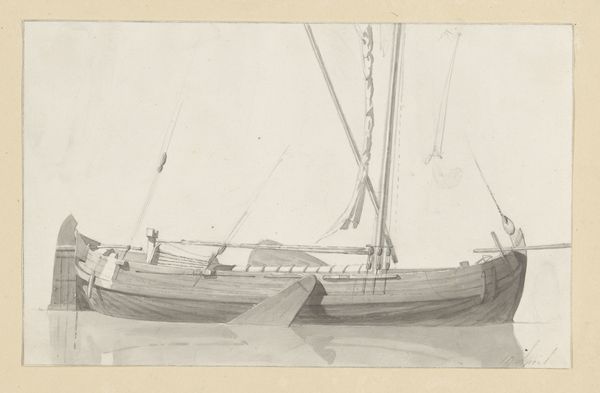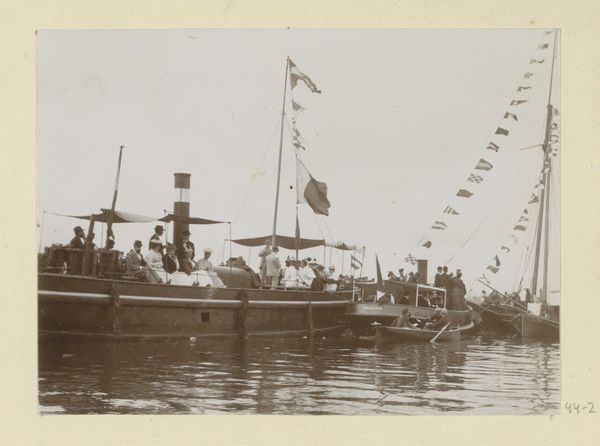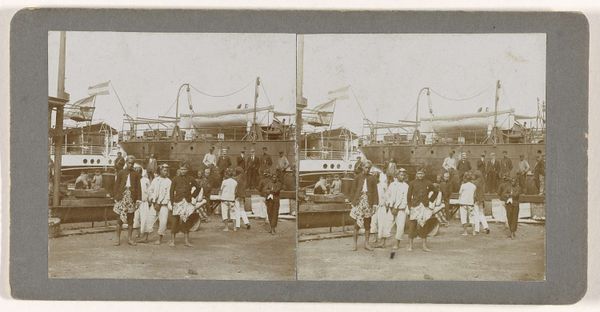
Dimensions: height 137 mm, width 96 mm
Copyright: Rijks Museum: Open Domain
Editor: Here we have a group portrait near a boat, taken sometime between 1905 and 1910 by William Smith. It is currently at the Rijksmuseum, and looking at it now, I'm struck by the sheer number of people crammed into what seems like a relatively small vessel. What catches your eye about this photograph? Curator: What fascinates me is the production of the image itself. Photography in this era wasn’t simply about pointing and shooting. Consider the chemicals, the large format camera, the labour involved in printing. It's a constructed scene, documenting not just the sitters but the burgeoning photographic industry. Who paid for this image? How many prints were made, and for whom? Editor: That’s an interesting way to consider the piece; I was very focused on the composition, and the relationships of the sitters to one another. Curator: Exactly. But even composition becomes a material question. Where did Smith place his camera? And consider the clothing worn - a symbol of the labor and industries supporting their existence. This is not just an aesthetic artifact, but also a document reflecting the material culture of the time. What social strata did those materials represent? Editor: I see your point. The uniformity in attire suggests a certain social class or maybe a specific affiliation among these individuals. How does their grouping, physically assembled in a singular location on this vessel, hint at an shared set of experiences, social standings, and labor? Curator: Precisely. Think of the environmental constraints that existed and the technological development behind capturing an image and how each photograph is inextricably linked to materials, production, and the complex dynamics of consumer culture and socio-economic divisions. Editor: It makes me reconsider historical photographs beyond their surface depiction; there’s a story of production and material embedded within each one. Curator: Indeed! By shifting the focus from simply "what" is depicted to "how" it was produced, we can reveal fascinating insights into the lives and times of the subjects.
Comments
No comments
Be the first to comment and join the conversation on the ultimate creative platform.
